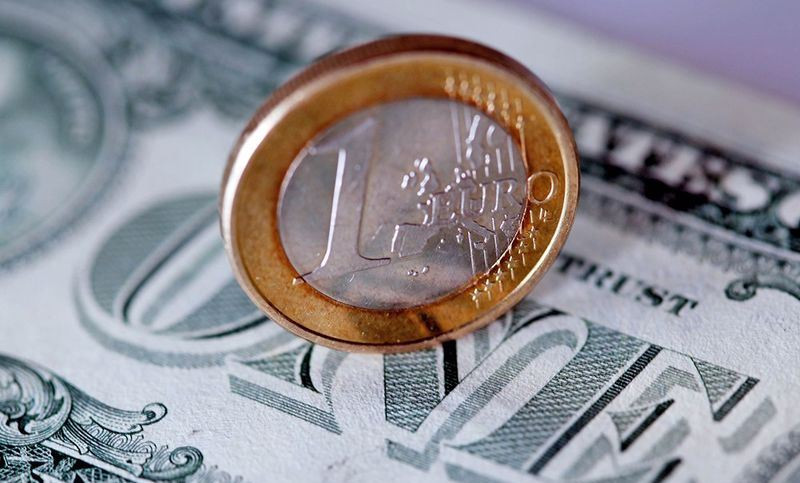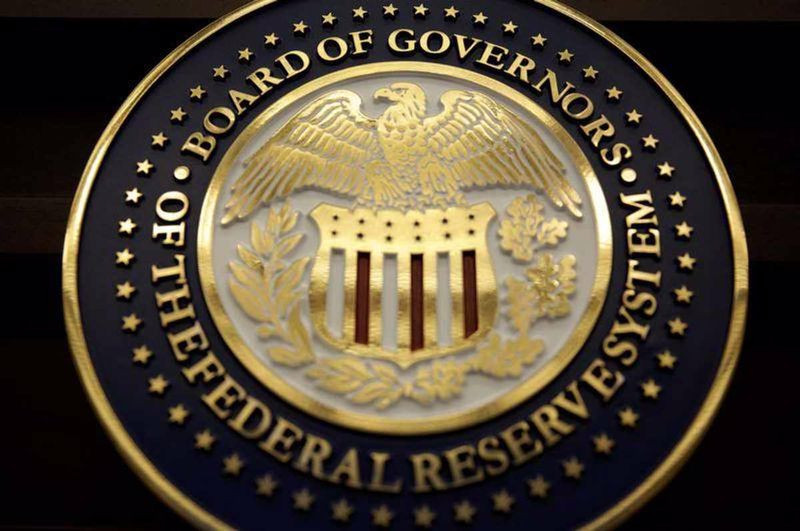After sharp fluctuations caused by US inflation data, the EUR/USD pair entered a consolidation phase.
Data released on Tuesday showed that the US consumer price index rose by 0.5% on a monthly basis in January after rising by 0.1% in December. This was the highest CPI reading since June.
Meanwhile, the indicator rose by 6.4% year-on-year posting the smallest rise since October 2021 after increasing by 6.5% in December.
The market reaction to this data was quite emotional.
EUR/USD initially bounced to a two-week high near 1.0800 and then reversed, rushing towards 1.0700. Ultimately, the pair was able to stabilize and win back early losses. It ended Tuesday's trading with an increase of almost 0.14% in the area of 1.0735.
In the first half of the day on Wednesday, EUR/USD fluctuated in a narrow range of 30-40 pips while investors continued to evaluate the latest data on US inflation, namely its impact on the Fed policy.
The Fed's key rate is currently in the target range of 4.50%-4.75%. In December, most central bank officials said that the level of 5.1% would be enough to reduce inflation.
Philadelphia Fed President Patrick Harker said on Tuesday that inflation news did not change his view that the policy rate will have to rise above 5%.
"How much above 5%? It's going to depend a lot on what we are seeing. Today, we had an inflation report that was good in that it is moving down, but not quickly," he said.
Still, Harker said, the Fed was "likely close" to reaching a sufficiently high enough level to pause.
"Inflation is normalizing, but it is coming down slowly. I think there is going to be a lot more inertia, a lot more persistence that maybe we don't want," Richmond Fed President Thomas Barkin said.
"If inflation settles, maybe we don't go quite as far, but if inflation persists at levels far above our target then maybe we'll have to do more," he added.
Dallas Fed Chairman Lori Logan believes that with an incredibly strong labor market that keeps inflation high, the Fed should not set a stopping point for rates yet.
"The main risk I see is that if we tighten monetary policy too little, the economy will remain overheated and we won't be able to contain inflation," she said.
"Given the strong labor market, there are clearly risks that inflation will remain higher for longer than expected, or that we may need to raise rates higher than current forecasts suggest," New York Fed President John Williams said.
In his opinion, ending 2023 with a base interest rate in the range of 5.00-5.50% seems to be the right approach to the policy outlook.
Following the CPO release for January, traders of interest rate futures now see the Fed raising borrowing costs three more times, bringing the policy rate to the 5.25%-5.50% range by July, if not June.
"The high authority of the Fed is not questioned. While the fall in inflation does not seem confident enough, we can say that the regulator will tighten monetary policy, and the weakening of the dollar seems less justified at the current stage," Commerzbank experts believe.
During European trading hours on Wednesday, the greenback was holding strong against its main competitors, causing consolidation in the EUR/USD pair.
The major currency pair lost balance after a report from the US Department of Commerce was released at the start of the New York session. The report showed that US retail sales increased by 3% last month compared to December, a record pace since March 2021.
The data indicated that the Fed would have to work harder to curb consumer demand and bring inflation under control.
As a result, the greenback US dollar strengthened and EUR/USD sank to local lows in the 1.0660 area.
However, later in the session, major Wall Street indicators were able to gain momentum, brushing off initial weakness which did not allow USD to extend the bounce.
Yesterday, the S&P 500 index rose by 0.28% to 4,147.6.
"The retail sales report, along with strong labor market data released last Friday, shows that the US economy remains resilient," strategists at Janus Henderson Investors wrote.
"We see the economy staying strong and inflation slowing down, albeit still too high, and this 'current 'Goldilocks' mood where the economy is strong, but inflation is receding, albeit still too high," they added.
In addition, the resilience of the US economy has given investors some hope that global growth prospects may not be as bleak as originally expected, spurring some risk appetite.
Against this background, the greenback has lost its upward momentum, allowing the EUR/USD pair to recover somewhat. However, it ended Wednesday's session in negative territory near 1.0689, down by almost 0.4% on the day.
During European trading hours on Thursday, EUR/USD consolidated its recent losses, fluctuating within the rage of 30 pips as the greenback took a breather after outperforming its major counterparts on Wednesday.
The data released at the beginning of the American session caused another bout of weakness in the EUR/USD pair.
US producer prices rose in January at the fastest pace in seven months, jumping by 0.7% in monthly terms.
This data raised concerns about the continuation of the Fed's rate hikes to curb inflation and pushed the greenback up while weighing on the stock market.
US stock indices fell sharply, losing about 1% at some point and dragging down the EUR/USD pair. The pair retested lows of January 9 around 1.0655 and then managed to recover.
The US dollar continues to benefit from the strong performance of the US economy.
However, some experts think that a CPI report and the data on retail sales may not be enough to convince the markets that the US economy is doing well.
The prospect of higher interest rates that may stay at this level for longer than expected is supporting the greenback.
The main question is how long the US economy can sustain the 5.5% rate.
A deep inversion of the US Treasury yield curve hints that the US economy would not be able to sustain this.
The futures market expects US rates to peak close to 5.25% by July before falling to 5.0% by the end of the year.
"We think data will remain the key driver for the dollar and the global risk environment, as the depth of the US economic slowdown is still a key driver of rate expectations, especially when it comes to the timing, size and pace of Fed easing in the medium term," ING analysts said.
"The EUR/USD pair appears to be set up for a wide trading range of 1.0500-1.1000 this quarter, leaving us comfortable with our EUR/USD outlook. The pair is forecast to end the first quarter near 1.0800 before rebounding strongly above 1.1000 in the second quarter as the US disinflation story continues to unfold as China restarts the economy," they added.
The EUR/USD pair seems to have consolidated in the trading range of 1.0500-1.1000, TD Securities specialists note. They believe that in the coming quarters, the pair will see a lot more ups than downs.
"The EUR/USD seems to have settled in a trading range of 1.0500-1.1000. At current levels, we are near the midpoint of this range, which forces us to wait for more profitable levels to enter the market. We see far more upsides than downsides for the euro in the coming quarters, reflecting our Q2 EUR/USD guidance of 1.1500. However, we prefer to be patient as we seek to buy near the bottom of the new range," TD Securities said.
Morgan Stanley remains positive about the single European currency.
"The near-term forward spread — the difference between the three-month rate and where investors see it in 18 months' time — is inverted for markets including the US and New Zealand, but remains roughly flat for the eurozone after declining in January. That's a sign that the European Central Bank can keep cranking up interest rates to tamp down on inflation without having to worry too much about the economic impact," the bank's experts said.
A mild winter eased the energy crisis in Europe, and labor markets show positive dynamics, supporting the ECB's view that the euro bloc will be able to avoid economic contraction this year.
The European Central Bank will raise the deposit rate at least two more times, bringing the final rate to 3.25% in the second quarter, according to most economists recently polled by Reuters. They see the possibility that eurozone rates could rise even higher.
At the same time, respondents do not expect the ECB to cut rates this year.
The poll also showed that the eurozone economy will shrink by 0.2% this quarter, after which it will grow by 0.1% in the second quarter, avoiding a recession. Forecasts for the third and fourth quarters imply growth of 0.2% and 0.3%, respectively.
Eurozone GDP is expected to increase by 0.4% this year.
The euro has fallen about 1.5% against the US dollar since early February, but the prospect that the ECB will continue to raise rates amid a resilient economy points to long-term upside potential for the single European currency, Morgan Stanley strategists said.
EUR/USD may extend its pullback, but this phase should be temporary, according to analysts at Credit Suisse.
"Short-term momentum remains bearish and a fall below 1.0695-1.0655 would mean a deeper but still corrective pullback to the next support at 1.0483-1.0463 (the area where Fibonacci retracements of the 38.2% 2022-2023 rally and early January lows). We expect this zone to be the best support if tested," Credit Suisse said.
"A break above the 1.0802-1.0806 area is needed to clear the way for a retest of 1.0944 (the Fibonacci retracement level for the 2021-2022 50% dip). A weekly close above this range should help the pair return to the high at 1.1035 and eventually to stronger resistance at 1.1185 -1.1275," the bank said.














